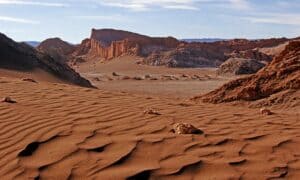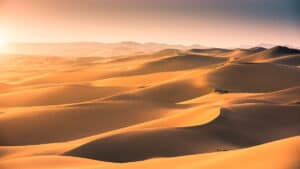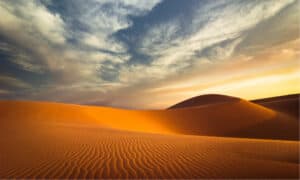The Atacama Desert is a cold and arid plateau in Northern Chile. It is most notable as the driest non-polar desert on earth. The Atacama Desert stretches from Southern Peru to Northern Chile. It is not just a bare desert land with miles after miles of sand. Instead, this unique desert has a unique landscape with various geographical features, including salt flats, lagoons, vast dunes, geysers, volcanoes, etc. Here are some interesting things to know about the Atacama Desert.
Location and Name
The Atacama Desert is also known as the Desierto de Atacama, the Spanish word for Atacama Desert. Its name has no unique meaning as it was simply named after its location and features. This desert is located on the western edge of the South American continent; It extends from the southern part of Peru up to the northern part of Chile.
The Atacama Desert does not have clearly-defined limits. It is a continuous strip of desert land from the Loa River’s south bend down to the mountains separating the Salado-Copiapó drainage basins. The Atacama goes all the way up north towards the border of Peru. To the east and west, the Atacama is bounded by mountainous areas. The Cordillera de la Costa, a low line of coastal mountains, is on the west of the desert, while the Cordillera Domeyko (the foothills of the Andes) is on the east. These unique natural landscape features contribute to the unique climatic conditions of the Atacama Desert.
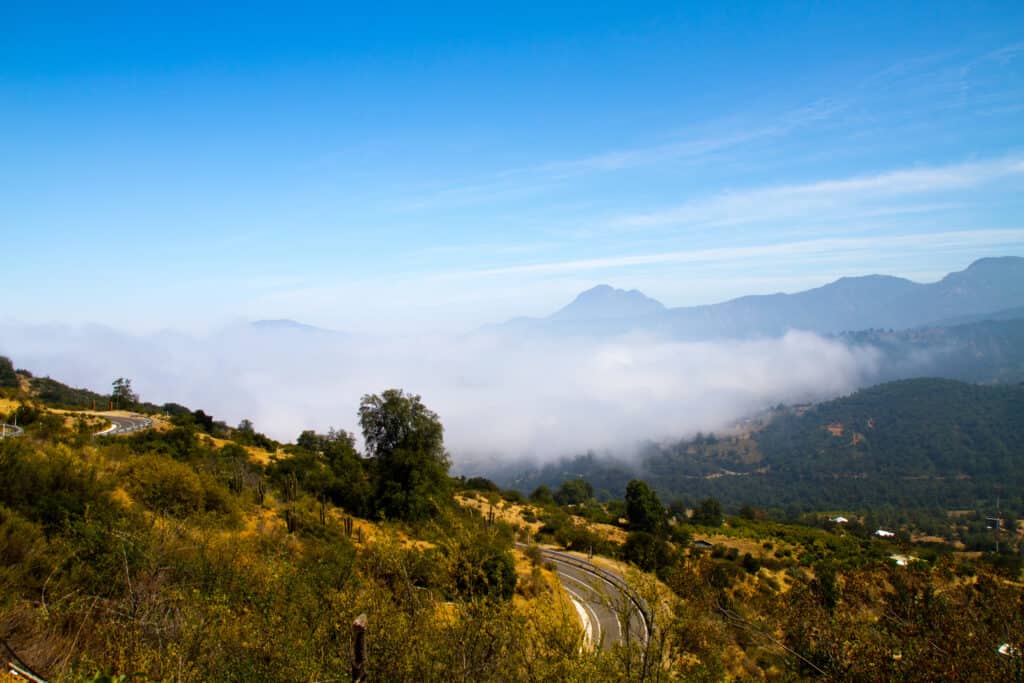
The Cordillera de la Costa, a range of low-lying mountains, stand at the western edge of the Atacama Desert.
©Photo_Traveller/Shutterstock.com
Atacama Desert Size
The Atacama Desert is about 600 to 700 miles (1,000 to 1,100 km) long from north to south. It covers a total land area of approximately 104,741 sq km (40,442 sq miles). If you add the barren scopes along the Andes mountain, the desert size will equal 128,000-kilometer square (49,000 sq mi).
The range of the desert stretches from the Andes Mountains on the east to the Pacific Ocean on the west. This is equivalent to a width of 60 miles from east to west. It is surrounded by a 1,000 kilometers long cliff on the coast of Northern Chile. From the coastline, the desert rises in elevation and has peaks in the eastern part reaching up to 6,000 meters above sea level.
Atacama Desert Geography
The Atacama Desert is one of the driest non-polar deserts in the world. This means it is the driest desert on earth when you exclude the polar deserts. The Atacama is also the largest fog desert in the world. This type of desert receives the majority of the moisture it gets as fog instead of actual rain. These factors make it a unique piece of natural landscape.
The average rainfall in the Atacama desert is 15 millimeters yearly, though some regions only get about 1 to 3 mm a year. While some areas in the desert do not receive any precipitation at all, the major parts of the desert receive 1 to 3 millimeters of rainfall in a year.
The aridity of the Atacama is often attributed to temperature inversion caused by two major natural features. These include the pacific anticyclone and the Humboldt ocean current. These two climatic phenomena contribute to the temperature inversion that accounts for the region’s unique climate.
The aridest region of this desert is also the driest location on the planet. It is located between the Andes Mountains and the Chilean Coast mountain range. These high mountains create a sort of two-sided rain shadow that prevents the formation of moisture in this area.
The average temperature is usually about 63 degrees Fahrenheit (18 degrees Celsius), reaching an average of 66 degrees Fahrenheit (19 degrees Celsius) by summer.
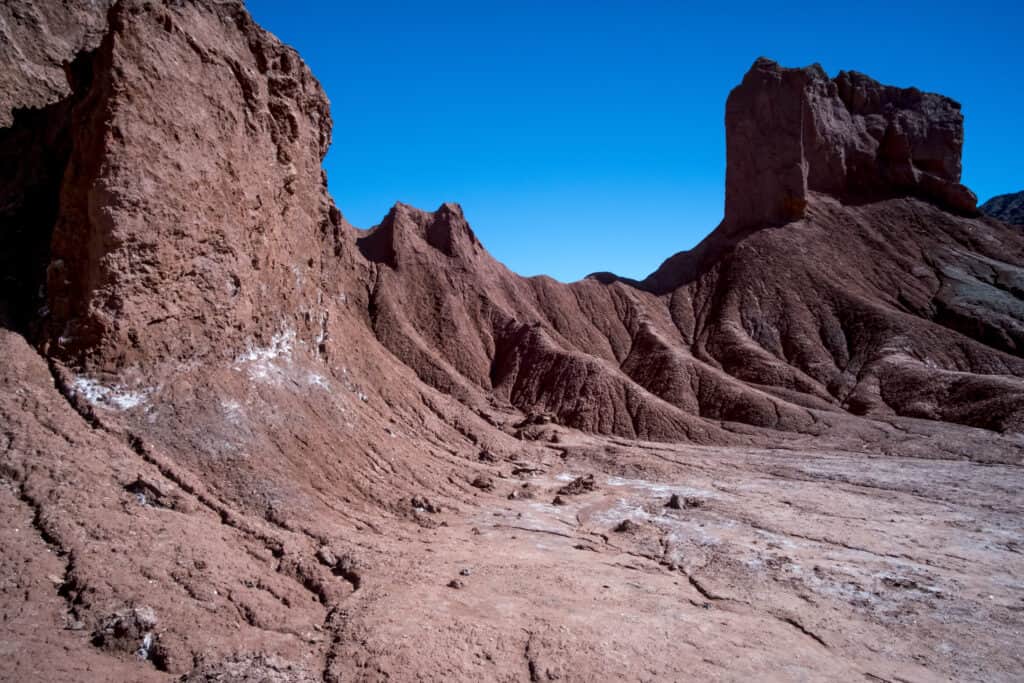
The Domeyko mountains, the foothills of the Andes, lie to the east of San Pedro de Atacama, helping ensure it is one of the driest regions in the world.
©Himanshu Saraf/Shutterstock.com
Physical Features
The Atacama Desert is the oldest desert on the planet. Scientists think the area has been semi-arid for more than 150 million years. The Atacama has several unique physical features. At the hyperarid core of the desert, you’ll find thick layers of salt deposits that stretch for miles. Some parts of this salt plains are up to 1.6 feet deep.
The entire desert is surrounded by mountains connected to the desert plateau by massive alluvial plains. Another unique feature of the Atacama is the 435-mile-long (700 km) and 12-mile wide (20 km) nitrate belt. This region was an essential source of nitrate minerals in the 1900s and is still relevant today as a local source of nitrates for various industrial applications.
An astrology hotspot located at the center of the desert. Situated at an elevation of 16,570 feet (5,050 meters), the Atacama Desert plateau is one of the best places to observe our solar system and galaxies far away. The desert sees up to 330-cloud-free nights yearly, making it a perfect spot to observe the stars. Amateur astronomers visit the desert with the telescope, and several observatories are also located there.
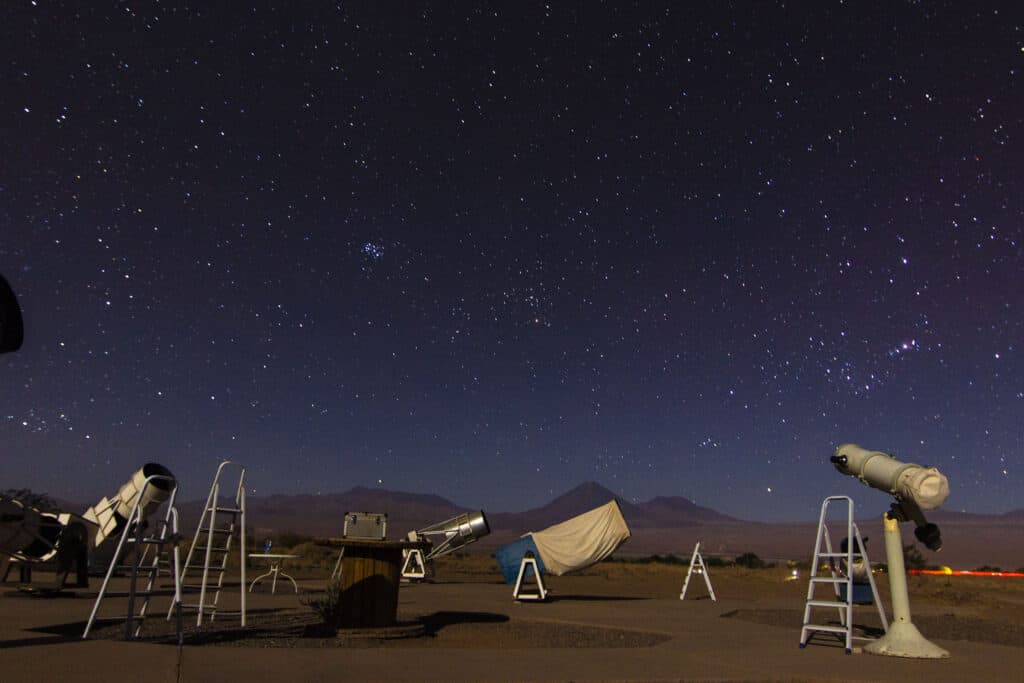
The stars are highly visible at night in San Pedro de Atacama, making the desert a popular destination of amateur and professional astronomers.
©abriendomundo/Shutterstock.com
Atacama Desert – Wildlife
Despite the harsh climatic conditions of the Atacama Desert, it still has an impressive variety of plant life. The population of animals in the desert region is not as remarkable as the flora, but a few animals still call this region home.
Plant Life of the Atacama
Due to the dry state of the desert, the Atacama Desert is almost without plant life. However, a few plant species have been known to grow along the slopes where the winter drizzles moisten. In fact, more than 500 species of plants have been identified in the Atacama Desert. Plant species in the Atacama Desert are pretty resilient and have evolved to adapt to the extreme conditions. The most common plants are small herbs and flowers like thyme, saltgrass, and llareta. However, larger plants and even trees like the pimiento tree, leafy Algarrobo, and chañar (Geoffroea decorticans) can survive in this desert.
Atacama Desert flora survives by combing out water from the fog. These plants grow in areas of the desert where there is little precipitation. At some point in history, a part of the desert supported a thriving woodland. However, this has since been lost to deforestation.
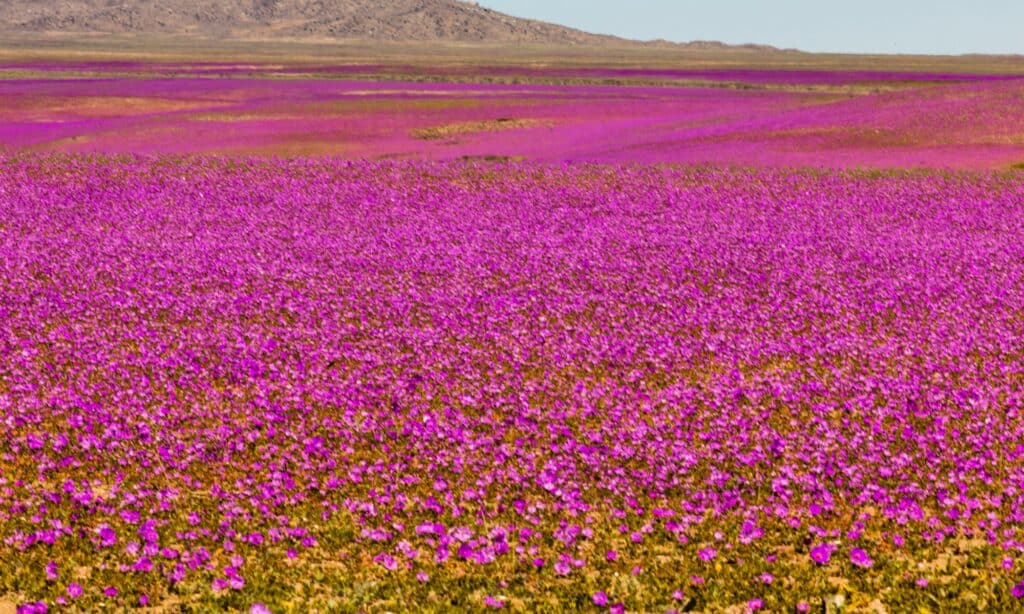
Over 150 species of plants have been identified in the Atacama Desert. From time to time when rain comes, thousands of seeds from hundreds of years ago bloom into amazing flowers, giving rise to the “Desierto Florido” phenomenon.
©iStock.com/abriendomundo
Animal Life of the Atacama
Though almost devoid of plant life, a few animals exist in the Atacama Desert. Expectedly, birds are the highest number of animals in the desert. There are the Humboldt penguins that live along the coast and nest on desert cliffs. You also have the Andean flamingos that feed on algae and stay near the salt flats. Other birds common here include hummingbirds, sparrows, and Chilean woodstar.
The mammalian population is more limited. Mammals that live in the desert include the South American gray fox, Darwin’s leaf-eared guanacos, and vicunas. Although reptiles can survive in deserts, only a few species are in the Atacama. These include the Iguanas, lava lizards, and salt flat lizards. You can also find the Vallenar toads, sand-colored grasshoppers, beetles, desert wasps, and red scorpions.
Up Next
The 8 Coldest Deserts On Earth Are Incredibly Frigid
This is The Largest Desert In Africa
The photo featured at the top of this post is © iStock.com/Eduardo Cabanas
Sources
- Jennifer Leman, Available here: https://www.livescience.com/64752-atacama-desert.html
- Eve Edinburgh, Available here: https://www.traveltalktours.com/10-fascinating-facts-about-the-atacama-desert/
- Marissa Becker, Available here: https://animalstratosphere.com/facts-about-the-atacama-desert/
Thank you for reading! Have some feedback for us? Contact the AZ Animals editorial team.



